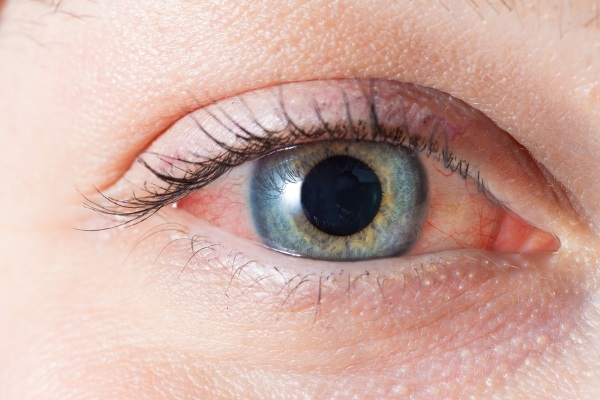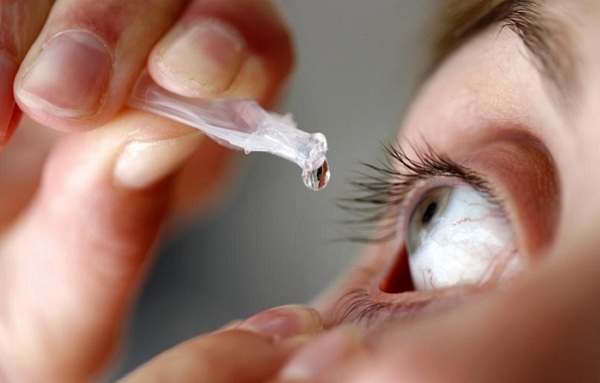Irifrin is Indian ophthalmic dropsused to reduce the value of intraocular pressure, normalize the outflow of excess fluid, reduce swelling of tissues, it also helps to narrow blood vessels, eliminate spasms in the eye tissues and expand pupil.
Due to the high price of drops, specialists can prescribe analogues that are not much inferior in efficiency, but at the same time their cost is cheaper.
Record content:
-
1 Domestic and imported analogues of the product
- 1.1 Atropine
- 1.2 Fotil Forte
- 1.3 Timolol-akos
- 1.4 Phenylephrine Optician
- 2 Prices
- 3 Video about the drug
Domestic and imported analogues of the product
Irifrin and analogues (cheaper funds can be bought only on the websites of official manufacturers, where goods without extra charges) are used to normalize the condition of the eye tissues and for diagnostic procedures.

The substitutes considered in this material have similar therapeutic properties, but differ in composition, contraindications and side effects. For the convenience of choosing a drug, all characteristics of the drugs are presented in comparison with the original.
Atropine
Irifrin and analogs (cheaper substitutes can only be prescribed by an ophthalmologist) should be used strictly with observance of the instructions, since these medicines are distinguished by a rather large list of side effects reactions. The domestic substitute Atropine with the main component of the same name normalizes the amount of fluid in the eye tissues, eliminates spasms, and promotes pupil dilation.
The drug provokes an increase in intraocular pressure and leads to accommodation paralysis. The original, on the contrary, helps to reduce intraocular pressure and eliminates accommodation paralysis. The effect of the analogue occurs in about 30 minutes and lasts up to 2 hours.
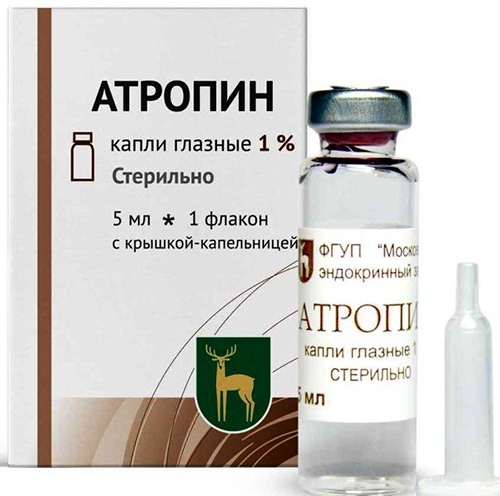
When using the original, vasoconstriction is noted within a minute, and the dilation of the pupil 20-60 minutes after instillation of the drug. The therapeutic effect of the drops remains up to about 5 hours.
Below are the data for the appointment of Atropine drops in comparison with Irifrin:
| Comparison of indications | |
| Atropine |
|
| Irifrin |
|
| General purpose |
|
Contraindications to the use of drops also differ.
Similar drug bans include:
- hypersensitivity to the components of the drops;
- the patient has any type of glaucoma;
- violation of the state and functioning of blood vessels;
- pregnancy and breastfeeding. Atropine can cause the development of tachycardia in the fetus or baby. For the original, the ban is justified by the lack of clinical trials on the safety of the drops;
- increased production of thyroid hormones;
- severe heart and liver failure;
- violation of the integrity of eye tissues;
- tachycardia (the number of heartbeats is higher than normal) and increased blood pressure;
- after 40 years, drops must be used with caution, since at this age glaucoma often begins to develop.
The table lists the differences in contraindications:
| Name of drops | Contraindications |
| Atropine |
|
| Irifrin |
|
The scheme of treatment with drops depends on the concentration of drops (Atropine is produced with a dosage of 0.1 and 0.05%, and the original with an indicator of 2.5 and 10%), the patient's age and the purpose of use. Therefore, the treatment for both medicines is selected individually.
The use of both drops may be accompanied by the development of a negative reaction.
The following are the same side effects for both medicines:
- disruption of the cardiovascular system;
- strong pupil dilation;
- an increase in heart rate;
- irritation of the tissues of the eye;
- blurred vision;
- a feeling of discomfort in the eyes and increased lacrimation;
- the development of allergic reactions;
- swelling of the eye tissues;
- increased blood pressure;
- photophobia.
The table shows the differences in adverse reactions for Atropine and Irifrin:
| Medicines names | Negative reaction |
| Atropine |
|
| Irifrin |
|
Despite the fact that both medicines are used topically, the likelihood of an overdose is not excluded, which (when using Atropine in a large dose) may manifest itself:
- severe dry mouth;
- difficulty swallowing liquid or food;
- strong photophobia;
- severe redness and swelling of the eye tissues;
- an increase in body temperature;
- tremor of the limbs;
- delirium, development of hallucinations;
- the development of tachycardia and an increase in pressure values.
To restore the patient's condition, it is necessary to cancel the drops, and symptomatic therapy is also prescribed. With oral administration of the analogue, there is an increase in the listed symptoms, death is not excluded due to the development of severe heart and pulmonary failure.
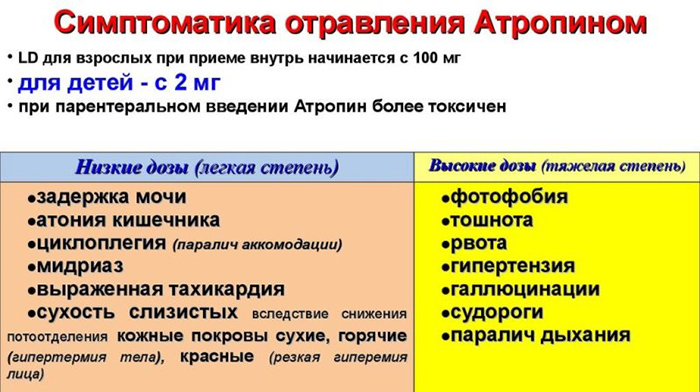
In case of poisoning with Atropine, an emergency call is required, since, in addition to providing first aid, control over the work of the heart and lungs is required.
In case of an overdose with an analogue (topically), an increase in side effects is noted. If Irifrin drops are swallowed, there is a high likelihood of cerebral hemorrhage and cardiac arrest. The measures to restore the condition (in case of overdose and poisoning) of the victim are similar.
You can buy Atropine and Irifrin drops strictly according to the prescription of an ophthalmologist.
Important. When using drops (typical for Atropine and Irifrin), driving vehicles and performing hazardous work are prohibited. Combined treatment using these medicines is possible only with the permission of a doctor.
Fotil Forte
An analogue of Fotil Forte is produced by companies in Finland and China. The main constituents of the drug (pilocarpine and timolol) contribute to normalization (increase or decrease) indicator of intracranial pressure, improve the outflow of excess fluid, also drops cause spasm accommodation.
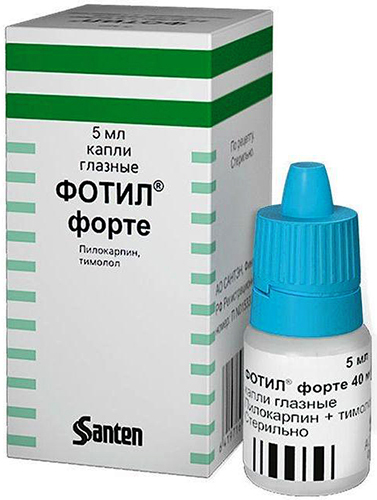
The therapeutic effect of drops occurs in about 20 minutes and can last up to a day. The duration of the therapeutic effect of the analogue is longer than that of Irifrin, while the drug is cheaper.
The list of indications for the use of Fotil Forte drops is much less than that of the original.
The data are presented in the table below:
| Similarities and differences in indications | |
| Fotil Forte | Increased intraocular pressure during the recovery period after ophthalmic surgery. |
| Irifrin |
|
| General purpose | To lower the value of intraocular pressure. |
Further, the similarities and differences between Fotil Forte and Irifrin are considered for contraindications.
General prohibitions include:
- severe heart pathology;
- carrying a child;
- hypersensitivity to the composition of the drops;
- breast-feeding;
- diabetes. But for Irifrin, this contraindication is absolute, and for an analogue, it is relative;
- increased production of thyroid hormones.
Differences in contraindications are presented in the table:
| Drop names | List of prohibitions |
| Fotil Forte |
|
| Irifrin |
|
The rules for using Fotil Forte drops are identical to the original. That is, the dosage, the frequency of manipulations and the duration of the course are selected strictly by an ophthalmologist.
Undergoing treatment with ophthalmic drops (Fotil Forte and Irifrin), patients may develop the following side effects:
| Negative effects from Fotil Forte | Adverse reaction from Irifrin | Common side effects |
|
|
|
In case of an overdose with an analogue (with topical application), it is noted:
- a sharp decrease in the pressure indicator;
- bronchospasm;
- the development of acute heart failure.
In case of accidental oral administration of a substitute, an increase in side effects is noted. In both cases, an ambulance call is required, since only a doctor can prescribe treatment. In case of an overdose or oral use of the original, the victim also develops side effects in a more pronounced form.
It is also necessary to call emergency help, since only a doctor can pick up medicines (to normalize the patient's condition).
Both types of ophthalmic drops are available with a prescription only.
When wearing contact lenses, they must be removed before instilling solutions (Fotil Forte or Irifrin), since the drugs can react with an ophthalmic device. Combined treatment (even with oral medications) can only be selected and prescribed by a specialist.
Timolol-akos
Irifrin and analogues (it is cheaper to buy funds of both domestic and foreign production) are prescription drugs, since their use is accompanied by a large list of side effects effects. Russian substitute Timolol-akos, includes the active ingredient timolol.
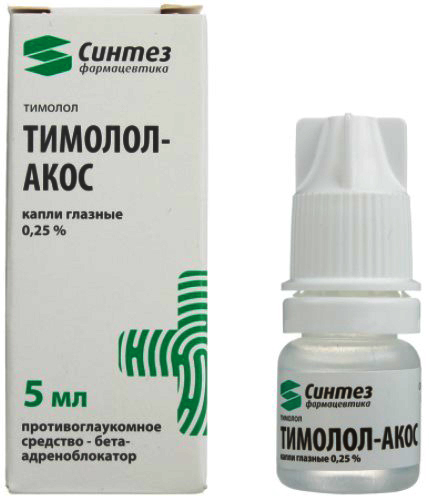
The main component helps to reduce intraocular pressure by reducing the production of intraocular fluid and increasing its outflow. In this case, the agent does not violate the state of the pupil (that is, it does not cause its expansion or narrowing). The healing properties are noted approximately 1 hour after the manipulation and can last up to 24 hours.
Further, a comparison was made between the original and the substitute for indications and prohibitions:
| Comparison of indications | |
| Timolol-akos |
|
| Irifrin |
|
| General indications | Normalization of intraocular pressure with a sharp increase |
| Comparison of prohibitions | |
| Timolol-akos |
If the patient has atrophic rhinitis, diabetes mellitus, impaired condition and activity the thyroid gland, as well as in case of impaired blood circulation, the use of drops should be carried out with a special caution. |
| Irifrin |
After 40 years, Irifrin drops must be used with caution. |
| General prohibitions |
|
The scheme for using drops Timolol-Akos is identical to Irifrin. The dosage and course of treatment are determined by an ophthalmologist.

The following is a general list of side effects from the use of drops:
- irritation and redness of the tissues of the eye;
- a feeling of discomfort in the eyes;
- increased lacrimation;
- burning sensation and itching in the eyes;
- violation of the quality of vision, after about 15 minutes vision stabilizes;
- development of puffiness, redness and inflammation of the eyelids;
- inflammation of the cornea of the eye;
- exacerbation of heart failure;
- dizziness, headache may appear.
Differences in negative reactions are presented in the table:
| Name of drops | Side effects |
| Timolol-akos |
|
| Irifrin |
|
In case of an overdose of Timolol-Akos drops (with local use), an increase in side effects is noted. It is recommended to rinse the eyes and carry out symptomatic therapy. You may need to go to a hospital. But when swallowing an analogue, you must immediately call an ambulance, since the development of cardiac arrest is possible.
In case of an overdose with the original (topically), an increase in side effects is also noted. It was recommended to provide the victim with first aid. When using Irifrin orally, you need to call an ambulance, since it is necessary to control the work of the heart.
Timolol-Akos and Irifrin are sold strictly according to the recipe.
Important. Drops Timolol-Akos and Irifrin can be used in combination treatment only with the approval of a specialist. When completing the course, it is necessary to exclude driving vehicles and performing hazardous work.
Phenylephrine Optician
Irifrin and (analogs should be bought cheaper only in trusted pharmacies) Phenylephrine-optic includes the same main component, only with different concentrations. In this regard, the indications, contraindications and side effects from the use of a substitute are completely identical with the original.

The difference in dosage and auxiliary elements only affects the speed of achieving a therapeutic effect. When using Phenylephrine-optic, the effect is observed after 10-60 minutes and lasts up to 6 hours (with Irifrin, the therapeutic effect occurs in 20-60 minutes and lasts up to 5 hours).
Prices
The cost of the original and the considered analogues is indicated in the table, taking into account the difference in prices by region:
| Name of drops | Vial volume | Price range (in rubles) |
| Irifrin 2.5% | 5 ml | 560-610 |
| Atropine 1% | 5 ml | 40-70 |
| Fotil Forte | 5 ml | 280-320 |
| Timolol-akos | 5 ml | 30-50 |
| Phenylephrine Optician | 5 ml | 300-350 |
Irifrin stands out among substitutes for its ability to be used from birth (for 2.5% drops), as well as its high efficiency. The analogs considered in the article differ slightly in their therapeutic actions, but their effectiveness is not lower. Also, the drugs are cheaper than the original.
Author: Kotlyachkova Svetlana
Video about the drug
Description of Irifrin and its analogues:


